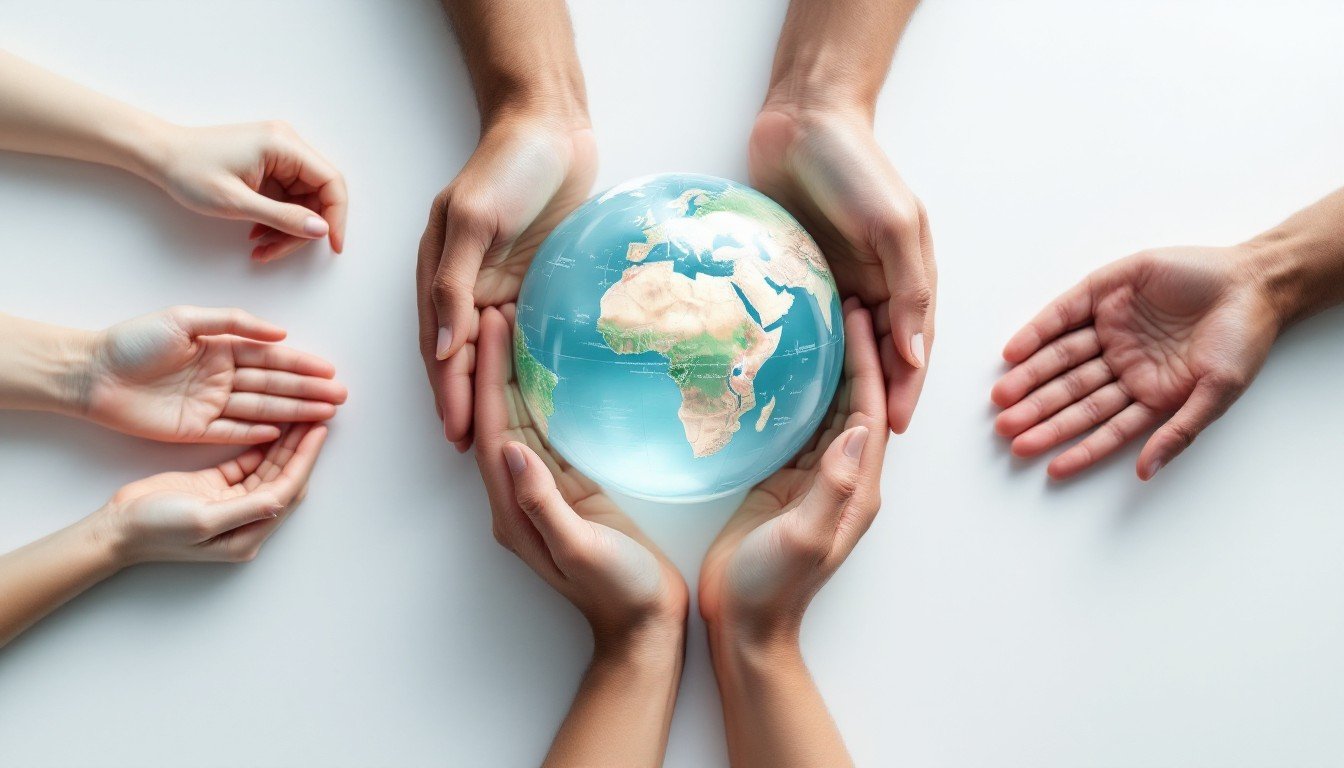When we talk about climate change, the conversation often revolves around rising temperatures, disappearing forests, or melting ice caps. While these are critical issues, one aspect that often gets overlooked is the human impact of climate change and how it affects people unequally. This is where the concept of climate justice comes into play. Climate justice looks beyond carbon emissions and scientific data to focus on fairness, equity, and inclusion in how we address the climate crisis. It recognizes that vulnerable communities, often with the least responsibility for climate change, are the ones who suffer the most from its effects.
By making equity and inclusion central to environmental movements, we can ensure that climate solutions are not only effective but also fair. Let’s explore why climate justice is so important and how inclusivity can help drive meaningful change in the global fight against climate change.
What is Climate Justice?
Climate justice is about recognizing that climate change is not just an environmental problem but also a social and ethical issue. It highlights that marginalized groups—such as low-income communities, Indigenous populations, and developing nations—face the harshest impacts of the crisis, despite contributing the least to the problem.
For example, while wealthy nations are large contributors to greenhouse gas emissions, it is often poorer countries that experience extreme floods, droughts, and rising sea levels. Climate justice seeks to correct this imbalance by demanding fair policies, shared responsibilities, and inclusive decision-making.
Why Equity Matters in Climate Action
Unequal Burden of Climate Change
Climate change does not affect everyone equally. Coastal communities lose homes to rising seas, farmers in drought-prone areas lose crops and livelihoods, and urban poor in heatwave-affected cities face deadly conditions without access to cooling systems. Equity ensures that the people who are most vulnerable get the support they need to adapt and thrive.
Responsibility and Fairness
Historically, industrialized nations have benefited the most from fossil fuel-driven growth, but developing regions are experiencing the worst climate disasters. Equity in climate action means that wealthier nations should take greater responsibility by reducing emissions faster, funding climate adaptation, and supporting sustainable development in vulnerable countries.
Inclusive Solutions
Equity also means that climate solutions must be inclusive. Renewable energy projects, for example, should create jobs and opportunities for underrepresented communities rather than displacing them. Policies should be crafted in consultation with those who are most affected, ensuring their voices shape the solutions.
The Role of Inclusion in Environmental Movements
Amplifying Marginalized Voices
Historically, environmental movements have often been dominated by privileged groups, sidelining the experiences of marginalized communities who are most at risk. Inclusion ensures that diverse voices are heard—whether from Indigenous leaders fighting deforestation or women in rural areas developing climate-resilient agriculture.
Building Stronger Movements
Inclusive movements are stronger and more sustainable. When different perspectives come together, they create holistic solutions that reflect real-world diversity. This collective strength makes environmental initiatives more effective and long-lasting.
Gender and Climate Justice
It is impossible to talk about inclusion without addressing gender. Women and girls disproportionately bear the impacts of climate change. For example, in many countries, women are responsible for gathering water and food—tasks made harder by droughts and unpredictable weather. By ensuring gender equality in climate solutions, we empower women as agents of change who can lead local and global initiatives.
Climate Justice and Global Policy
Paris Agreement and Global Cooperation
The Paris Agreement recognized that richer countries must support poorer ones in transitioning to renewable energy and adapting to climate changes. Climate justice is central to this cooperation, ensuring that financial and technological support goes where it is needed most.
Climate Finance and Fair Support
Billions of dollars are pledged yearly for climate action, but the challenge lies in fair distribution. Developing nations often lack access to these funds due to complex requirements. Equity demands simpler funding mechanisms and targeted investment in vulnerable regions.
Loss and Damage Mechanism
One of the most debated aspects of climate negotiations is compensation for “loss and damage.” This means financial and technical support for small island nations and climate-impacted regions that suffer irreversible harm. Inclusion ensures that these nations are not just recipients of aid but active participants in shaping climate policy.
Real-World Examples of Climate Justice in Action
Indigenous Climate Leadership
Indigenous communities have been frontline defenders of forests, rivers, and ecosystems for centuries. Their traditional knowledge combined with modern science offers some of the most sustainable climate solutions. Empowering Indigenous leadership is an essential part of climate justice.
Youth Movements Around the World
From Greta Thunberg’s Fridays for Future movement to grassroots youth organizations in Africa and Asia, young people are demanding climate action that prioritizes justice. They emphasize not only rapid emission cuts but also accountability from global leaders.
Local Resilience Projects
In countries like Bangladesh, community-led adaptation projects such as floating farms and climate-resilient housing demonstrate how inclusive climate solutions can both protect vulnerable communities and foster innovation.
Barriers to Climate Justice
While the vision for climate justice is clear, several barriers remain.
- Political resistance: Some governments prioritize short-term economic growth over sustainable practices.
- Lack of resources: Vulnerable communities often lack funding and technology to implement solutions.
- Exclusion from policy-making: Marginalized voices are still frequently left out of climate negotiations.
Breaking these barriers requires global solidarity and the will to recognize climate change as a shared human challenge
Why Inclusion Strengthens Climate Solutions
When communities feel excluded, climate policies often face resistance or fail to deliver results. But when people feel heard and valued, they become active participants in tackling climate change. For instance, renewable projects that involve local communities in decision-making are far more likely to succeed than those imposed without consultation.
Inclusion builds trust, ownership, and accountability—all crucial elements in long-term climate success.
How Individuals Can Support Climate Justice
Climate justice is not just a responsibility for governments and organizations. Individuals can also play an active role:
- Support climate justice organizations working with vulnerable communities.
- Use your voice to highlight inequality in climate action.
- Adopt sustainable practices in daily life, from reducing waste to using clean energy.
- Demand policymakers prioritize equity and inclusion in climate strategies.
Conclusion
Climate change is the defining challenge of our time, but addressing it requires more than cutting carbon emissions. It requires fairness, equity, and inclusion. Climate justice ensures that no one is left behind as we transition to a greener future. By amplifying marginalized voices, emphasizing fairness in global cooperation, and creating inclusive solutions, we can build a movement that not only tackles climate change but also uplifts communities worldwide.
The climate crisis affects us all, but solutions must work especially for those who are most vulnerable. Climate justice is not optional—it is essential. The path forward must be inclusive, equitable, and rooted in fairness for people and planet alike.
Strong Call to Action
Join the movement for climate justice today. Support inclusive policies, amplify marginalized voices, and demand equity at every level of climate action. Together, we can build a just, sustainable future where everyone—not just a privileged few—has the opportunity to thrive.






